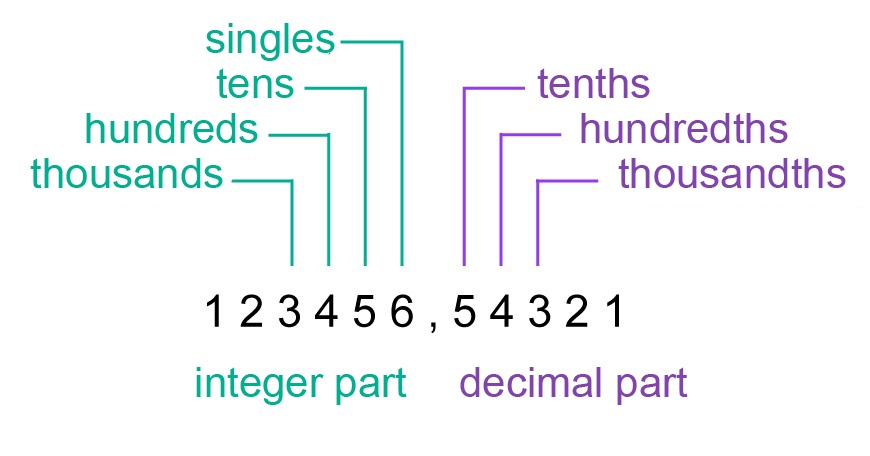1. Decimal numbers and significant figures
Exercises
Significant figures
When calculating with decimal numbers, plenty of attention must be paid in order to achieve accurate results. When calculating with a calculator, we can get numbers that could be replaced by any number. The values of all figures obtained cannot be relied upon. Significant figures indicate which of the digits in the number are accurate and which are not.
All numbers except zeros at the beginning of a decimal number and at the end of an integer are considered to be significant figures. In contexts, zeros at the end of an integer may also be significant.
Example 2
a) The integer 500 000 has one significant figure. b) The decimal number 0.250 has three significant figures.
c) The decimal number 0.04 has one significant figure.
d) The decimal number 89.20 has four significant figures.
e) Integer 4005 has four significant figures.
f) Integer 540 has two or three significant figures, depending on whether the number is rounded.
When a decimal number is truncated, the final significant number is incremented by one if it is followed by [[$ 5, 6, 7, 8 $]] or [[$ 9 $]]. When rounding decimal numbers, the decimals after the truncation point are omitted. When rounding integers, the numbers that follow the truncation point are replaced by zeros.
Example 3
Round the numbers from the given point.
a) [[$ \text{4.57|392} \approx \text{4.57} $]]b)[[$ \text{0.609|75} \approx \text{0.610} $]]
c) [[$ \text{5 41|5 880} \approx 5 150 000 $]]
The sign [[$ \approx $]] is read “approximately equal to”.
The number notation system
The number notation system we use is considered a positional system. In it, the meaning of a digit is affected by its place in the figure. The number zero usually signifies nothingness, but if it is placed after one, the value of the number one will increase tenfold. There are several different positional number notation systems. Each of these systems has a specific base number. The system we use is called the decimal system. It has a base number of 10.

Example 1
Express the following decimals as fractions.
a) 0.32
b) 0.845
c) 3.4
The last number means hundredth parts, so [[$ \text{0.32} = \dfrac{32}{100}$]].
b) 0.845
The last number means thousandth parts, so [[$ \text{0.845} = \dfrac{845}{1000}$]].
c) 3.4
The last number means tenth parts, but there is also a whole part in the number, so [[$ \text{3.4} = 3 \dfrac{4}{10} = \dfrac{34}{10}$]].